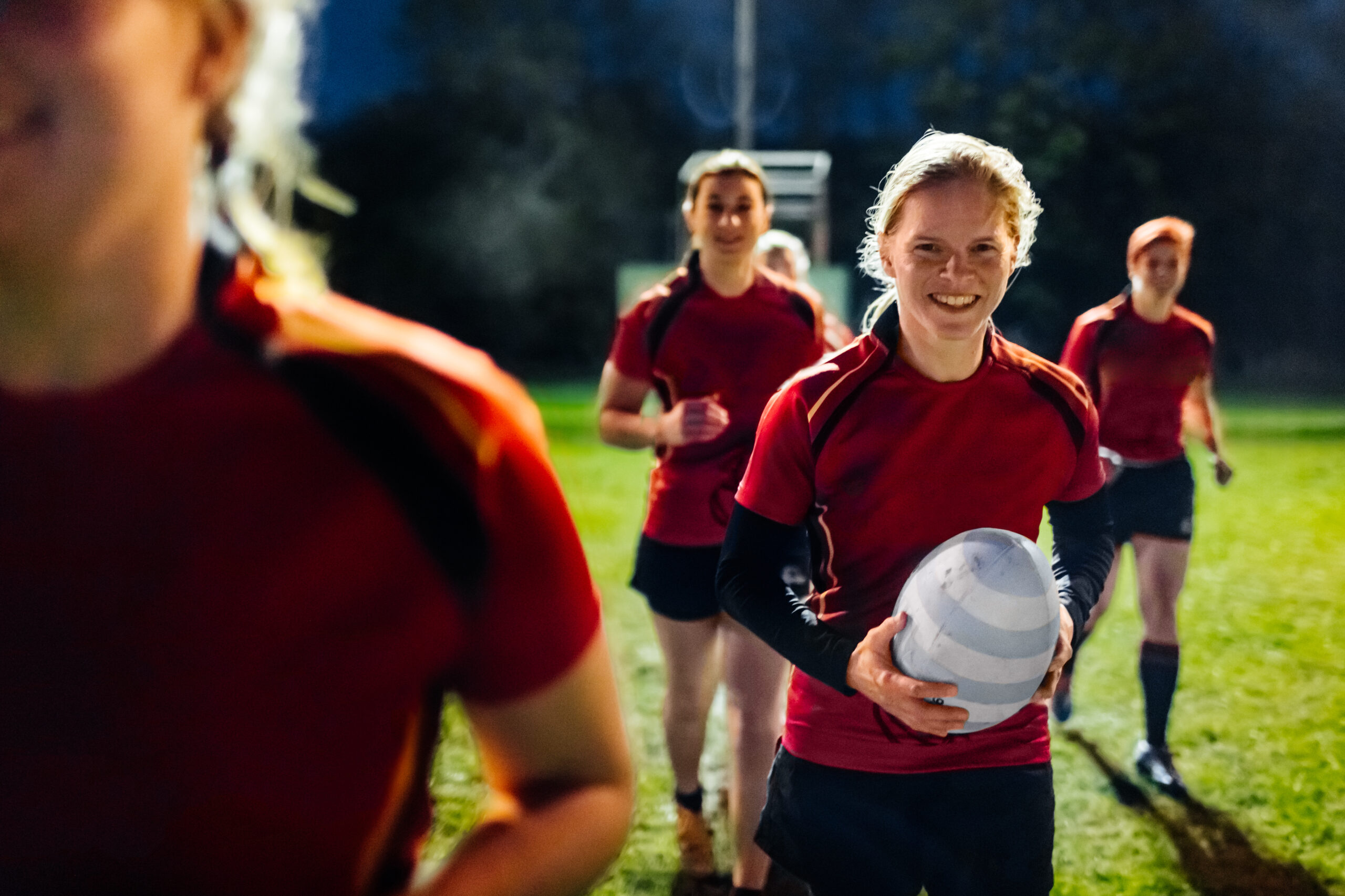Ever pulled off a spectacular tackle only to feel a sharp pain moments later?
Rugby union is a thrilling sport that demands speed, strength, and resilience, but its high-impact nature makes injuries a common challenge for players.
Whether you’re an amateur enthusiast or a seasoned athlete, understanding the most frequent rugby union injuries and how to manage them can keep you playing longer and recovering smarter.
Most common Rugby Union injuries
Concussions
One of the most serious injuries in rugby, concussions occur from heavy tackles or accidental collisions.
Symptoms include dizziness, headaches, confusion, and sensitivity to light or sound.
Proper management involves rest, gradual return to activity, and professional assessment and treatment by a physiotherapist or medical expert.
Knee injuries (ACL & MCL tears)
Quick directional changes and forceful tackles put significant strain on the knees.
Injuries to the anterior cruciate ligament (ACL) and medial collateral ligament (MCL) can side-line players for months.
With proper assessment and rehabilitation, athletes can make a full recovery.
Shoulder dislocations and rotator cuff injuries
Shoulder injuries are common due to the forceful impacts of tackles and scrums.
Dislocations occur when the upper arm bone shifts out of place, while rotator cuff strains affect the muscles and tendons responsible for shoulder movement.
Strength training and proper tackling techniques help prevent these injuries.
Sprained ankles
Tackles, jumping, or landing on another’s foot can result in an ankle sprain.
Pain, bruising and difficulty walking can be associated with ankle sprains.
Physiotherapy treatment includes gradual increases in strength, range of motion and sport specific exercises to prevent future injuries.
Hamstring strains
Sudden sprints or overstretching can lead to painful hamstring strains.
Recovery involves rest, stretching, progressive strengthening exercises, and sometimes massage therapy to relieve tension in the surrounding muscles.
Prevention, recovery and return to play
Rugby injuries are common, but with the right approach, players can significantly reduce their risk and recover effectively when injuries do occur.
Prevention starts before players even step onto the field.
Here are key strategies to minimise injury risk:
- Proper warm-up and stretching: a dynamic warm-up increases blood flow and prepares muscles for intense activity. Stretching improves flexibility and reduces strain on joints and muscles.
- Strength and conditioning: building muscle strength, particularly in the core, legs, and shoulders, helps absorb impact and stabilise joints. Exercise physiologists can design tailored programs to enhance strength and endurance.
- Technique training: learning correct tackling, landing, and movement techniques reduces the likelihood of injuries. Programs like SmartRugby in Australia emphasise safe playing practices.
- Protective gear: wearing mouthguards, padded clothing, and properly fitted boots can help prevent injuries.
- Recovery and rest: overuse injuries are common in rugby. Scheduling rest days and diversifying activities can avoid long-term damage.
Recovering from rugby injuries
Recovery depends on the type and severity of the injury.
Here’s how players can bounce back:
- Physiotherapy and rehabilitation: a structured rehab program led by physiotherapists guides the athletes through the acute healing phase and carries over into strength rebuilding and return to sport.
- Massage therapy: helps relieve muscle tension, improve circulation, and accelerate recovery.
- Gradual return to play: rushing back too soon increases the risk of further injury. A phased return to play, guided by a physiotherapist and exercise physiologist, ensures players regain full strength safely.
Injured?
You aren’t alone.
Injuries are often a part of the game, but with proper prevention strategies and expert recovery support, players can stay strong and return to the field with confidence.
If you’ve experienced an injury, book in to see one of our physiotherapists to help support your recovery.
Carly Mann
Physiotherapist at Lifecare Northern Sports Physiotherapy Clinic. Carly’s post-graduate education and experience in sports physiotherapy enables her to effectively work with injured athletes to ensure they return to play confidently.

